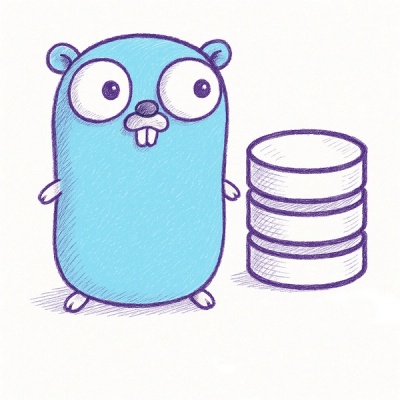
Security News
Browserslist-rs Gets Major Refactor, Cutting Binary Size by Over 1MB
Browserslist-rs now uses static data to reduce binary size by over 1MB, improving memory use and performance for Rust-based frontend tools.
vue-preferences
Advanced tools
The coolest and easiest way to manage your user's preferences through localStorage and no back-end calls at all.

The coolest and easiest way to manage your user's preferences on the client side with your preferred storage.
Many times happens that you want to handle some persistent state on your application but you find that doing an actual call to your back-end is like "killing a mosquito with a bazooka". For those scenarios, we decided to create the vue-preferences library.
With vue-preferences, you can keep some state of your app on the client side by using any storage strategy you find suitable, as a default we use window.localStorage under the hood. This way you ensure your UX keeps consistent while at the same time avoiding simple but annoying calls to your back-end. You can set some user preferences such as theme color, users' default, hidden elements (after user opted-in), table sorting, and many others you can imagine with great simplicity.
If you prefer yarn:
$ yarn add vue-preferences --save
or with npm:
$ npm install vue-preferences --save
You can define your vue-preferences in many ways. You can create them one by one, many at once and also with or without default values. Let's see what this means!
But first, remember to install the plugin before using it with:
import VuePreferences from 'vue-preferences';
Vue.use(VuePreferences);
new Vue({
render: h => h(App),
}).$mount('#app');
This only needs to be done once, in the main.js or index.js file of your app, where you mount the Vue app for the first time.
Here you'll see how to create a single preference at a time.
Basically, you would do something like:
import { preference } from 'vue-preferences'
computed: {
isDarkMode: preference('isDarkModeEnabled', { defaultValue: false, reactive: false })
}
keep in mind that there is no need to pass an options object if you don't need it
computed: {
isDarkMode: preference('isDarkModeEnabled')
}
This will basically map your computed property isDarkMode to the value you have stored in localStorage under the key isDarkModeEnabled. Here you are explicitly mapping the localStorage key isDarkModeEnabled (that we will be creating for you) with your isDarkMode computed property.
We have two possible ways to create multiple vue-preferences properties at a time: the Array way or the Object way.
Suppose you want to create two properties translatedTo and isZoomed. In the Array way, you could achieve that by doing:
import { mapPreferences } from 'vue-preferences'
computed: {
...mapPreferences(["translatedTo", "isZoomed"])
}
Does it sound natural to you?
If it does, it's because it's just like vuex! 🎉
For those who don't know what I'm talking about, I will explain:
...mapPreferences(["translatedTo", "isZoomed"])
is great because you can declare as many preferences as you need with just one single line and internally this is just the same as doing:
translatedTo: preference('translatedTo'),
isZoomed: preference('isZoomed')
Does it make more sense now? - Cool!
Hang on, but... Is there a way to pass my custom options to each preference if I declare them as an array?
- I'm sorry, you can't. You can't provide custom options to each preference, but we have good news! We also added support to the Object way, remember we had mentioned this before. Let's see how to use it.
By using the Object way you are allowed to create both multiple preferences and also provide custom options to each preference (such as defaultValue) at the same time.
Let's see how to do it:
computed: {
...mapPreferences({
translatedTo: {
defaultValue: 'spanish'
},
isZoomed: {
defaultValue: false
}
})
}
This might look pretty familiar to you if you are used to window.localStorage API. But it has some advantages to it, for example, you create the property and you only need to know the name once, after that you can just pass the preference as a variable and use it with get/set.
If at some point you need to know what is in your preference property, you just need to call the get method and you will have it.
// suppose you defined the following preference for saving the site's locale
const locale = preference('locale', { defaultValue: 'en' });
// obtains the value stored in the storage (by default localStorage) under the key "locale" or returns default: "en"
console.log('Current locale is:', locale.get());
// prints "Current locale is: en"
Keep in mind that if you defined your preference without a default value, and you haven't called the API to set any it, then the result of calling
getwill benull.
If you didn't define the preference as a computed property and instead did it as a regular variable, then it might happen that you want to handle it by your own.
If that's the case, you don't have other alternative than using the API to set the new values (in fact you have another alternative: to change the storage values with its API, but why would you do that? 🤭)
How to do it?
// suppose the same property than in the previous example
const locale = preference('locale', { defaultValue: 'en' });
locale.set('es');
// obtains the value stored in the storage (by default localStorage) under the key "locale" or returns default: "en"
console.log('Current locale is:', locale.get());
// prints "Current locale is: es"
This time the result is
es, noten.
This are the options available for the properties you define, any option you define on a preference has precedence over any global option you have defined or any provided default.
| Option | Default Value | Description |
|---|---|---|
storage | window.localStorage | Allows you to set up where the properties will be saved. By default we use localStorage, but you can use for example sessionStorage or any kind of storage. If you provide an object that has the same getItem and setItem API that localStorage has, then you can use that as a storage. |
defaultValue | null | Allows you to set up the preference with a custom default value. This allows you to ensure that even the first time the preference is read you will get something. |
reactive | true | By default preferences are reactive. This means that if you use the property in your template/code you can expect it to be observed and trigger re-renders, just like normal computed properties while at the same time the values get persisted to localStorage (or your storage of choice). If you disable this behavior the property will not trigger re-renders/re-computation of dependant code |
serializer | JSON.stringify | The default serializer is JSON.stringify, this allows you to save all kinds of objects. You could for example use a CSV serializer. |
deserializer | JSON.parse | The default deserializer is JSON.parse, and if it cannot deserialize a value it will return the value raw from the storage. |
namespace | '' | The default namespace is empty, which means that the properties will get saved and read from the storage with the name of the preference. For example of the preference name is firstName, it will get stored as firstName, but if you add the namespace userData, it will get saved as userData:firstName |
ttl | infinite | The Time-to-Live of a preference, the time in seconds after the preference creation/update at which a preference - if found on the storage - will be ignored and destroyed when tried to be read. |
expiration | infinite | A Date or function (returning a Date) at which the preference will be considered expired. This behaves like the ttl option. |
🚀 In the future, we will be supporting other custom options that will add even more power to the preferences you set. Stay tuned and support!
Options can be defined globally and will affect all the preferences in your project unless overridden by individual preferences.
Example of global options usage:
import VuePreferences from 'vue-preferences';
Vue.use(VuePreferences, {
storage: window.sessionStorage,
namespace: 'my-app'
});
⚡ Please note that the API for defining multiple preferences at the same time is different from the one for creating a single preference (preference vs ...mapPreferences) ⚡
All contributions or issue reporting are welcomed. If you are submitting a bug issue please include information to help us debug it!
If you plan to contribute, please make sure you test the code. Any new feature or bug fix should have its own test case.
FAQs
The coolest and easiest way to manage your user's preferences through localStorage and no back-end calls at all.
The npm package vue-preferences receives a total of 406 weekly downloads. As such, vue-preferences popularity was classified as not popular.
We found that vue-preferences demonstrated a not healthy version release cadence and project activity because the last version was released a year ago. It has 2 open source maintainers collaborating on the project.
Did you know?

Socket for GitHub automatically highlights issues in each pull request and monitors the health of all your open source dependencies. Discover the contents of your packages and block harmful activity before you install or update your dependencies.

Security News
Browserslist-rs now uses static data to reduce binary size by over 1MB, improving memory use and performance for Rust-based frontend tools.

Research
Security News
Eight new malicious Firefox extensions impersonate games, steal OAuth tokens, hijack sessions, and exploit browser permissions to spy on users.

Security News
The official Go SDK for the Model Context Protocol is in development, with a stable, production-ready release expected by August 2025.